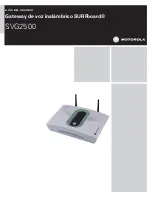
4-5
Cisco Intrusion Prevention System Appliance and Module Installation Guide for IPS 7.0
OL-18504-01
Chapter 4 Installing the IPS 4270-20
Hardware Bypass
Figure 4-4
shows the 10GE interface card.
Figure 4-4
10GE Interface Card
GigabitEthernet
slot_number
/
port_number
is the expansion card interface naming convention for the
IPS 4270-20. The slot number is shown above the slot in the chassis and the port number is numbered
from top to bottom starting with 0.
Hardware Bypass
This section describes the 4GE bypass interface card and its configuration restrictions. IT contains the
following topics:
•
4GE Bypass Interface Card, page 4-5
•
Hardware Bypass Configuration Restrictions, page 4-6
•
Hardware Bypass and Link Changes and Drops, page 4-7
4GE Bypass Interface Card
The IPS 4270-20 supports the 4-port GigabitEthernet card (part number IPS-4GE-BP-INT=) with
hardware bypass. This 4GE bypass interface card supports hardware bypass only between ports 0 and 1
and between ports 2 and 3.
Note
To disable hardware bypass, pair the interfaces in any other combination, for example 2/0<->2/2 and
2/1<->2/3.
Hardware bypass complements the existing software bypass feature in Cisco IPS. The following
conditions apply to hardware bypass and software bypass:
•
When bypass is set to OFF, software bypass is not active.
For each inline interface for which hardware bypass is available, the component interfaces are set to
disable the fail-open capability. If SensorApp fails, the sensor is powered off, reset, or if the NIC
interface drivers fail or are unloaded, the paired interfaces enter the fail-closed state (no traffic flows
through inline interface or inline VLAN subinterfaces).
•
When bypass is set to ON, software bypass is active.
Software bypass forwards packets between the paired physical interfaces in each inline interface and
between the paired VLANs in each inline VLAN subinterface. For each inline interface on which
hardware bypass is available, the component interfaces are set to standby mode. If the sensor is
253975





































